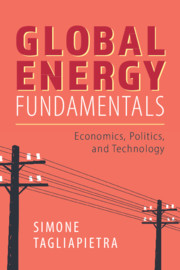Book contents
- Global Energy Fundamentals
- Praise for Global Energy Fundamentals
- Global Energy Fundamentals
- Copyright page
- Dedication
- Contents
- Figures
- Tables
- Preface
- 1 Introduction to Global Energy
- 2 Oil
- 3 Natural Gas
- 4 Coal
- 5 Nuclear Energy
- 6 Renewable Energy: Introduction and Established Sources
- 7 Renewable Energy: New Sources
- 8 Energy Consumption and Energy Efficiency
- 9 In-Depth Focus 1: Energy and Climate Change
- 10 In-Depth Focus 2: Energy Access in Africa
- Bibliography
- Index
2 - Oil
Published online by Cambridge University Press: 28 July 2020
- Global Energy Fundamentals
- Praise for Global Energy Fundamentals
- Global Energy Fundamentals
- Copyright page
- Dedication
- Contents
- Figures
- Tables
- Preface
- 1 Introduction to Global Energy
- 2 Oil
- 3 Natural Gas
- 4 Coal
- 5 Nuclear Energy
- 6 Renewable Energy: Introduction and Established Sources
- 7 Renewable Energy: New Sources
- 8 Energy Consumption and Energy Efficiency
- 9 In-Depth Focus 1: Energy and Climate Change
- 10 In-Depth Focus 2: Energy Access in Africa
- Bibliography
- Index
Summary
This chapter starts by outlying the key characteristics of oil use, including: i) The history of oil; ii) Where oil resources are currently located across the globe, also with a focus on the difference between conventional and unconventional resources; iii) Technological aspects of oil exploration, production and transport; iv) Global oil production, consumption and trade trends. It then analyses the geopolitical issues associated with oil, including: i) How changes in the locations of oil supply could affect global security; ii) How changes in the locations for oil demand could affect global security; iii) The current “chokepoints” in transporting oil supply to users, and how their risks could be addressed.
Keywords
- Type
- Chapter
- Information
- Global Energy FundamentalsEconomics, Politics, and Technology, pp. 27 - 57Publisher: Cambridge University PressPrint publication year: 2020

